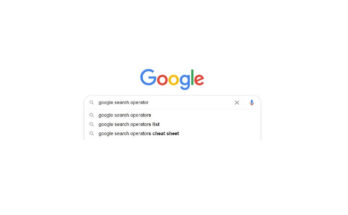Pay-per-click (PPC) advertising has become an essential tool for businesses to drive targeted traffic to their websites. Two of the most popular PPC platforms are Google Ads and Microsoft Ads (formerly Bing Ads). While Google Ads has long been the dominant player in the market, Microsoft Ads has gained traction in recent years. In this article, we will examine the differences between the two platforms and help you decide which one is right for your business.
Google Ads
Google Ads is the largest and most widely used PPC platform, accounting for a significant majority of the global search market share. It allows advertisers to display their ads on Google’s search engine results pages (SERPs), as well as on other Google-owned properties such as YouTube and Gmail. Google Ads uses an auction-style bidding system, where advertisers bid on keywords relevant to their business to have their ads shown to users searching for those keywords
Microsoft Ads
Microsoft Ads, formerly known as Bing Ads, is the PPC advertising platform from Microsoft, powering ads on the Bing search engine and its partner sites. Although Microsoft Ads has a smaller market share compared to Google Ads, it still reaches a substantial audience, with millions of searches performed on the Bing search engine every day. Like Google Ads, Microsoft Ads uses a keyword-based bidding system, allowing advertisers to target specific keywords to display their ads to relevant users.
Microsoft Ads vs. Google Ads
When comparing Microsoft Ads to Google Ads, there are several key differences to consider. Let’s explore these differences in more detail:
- Display URL
In Google Ads, the display URL is the web address that appears below the ad headline in the SERPs. It helps users get an idea of where they will be directed to when they click on the ad. In Microsoft Ads, the display URL can be customized to show a more user-friendly version. This can be beneficial for advertisers who want to showcase their brand or make the URL more memorable for potential customers. - Description Text
Both Google Ads and Microsoft Ads allow advertisers to create compelling ad descriptions. However, Microsoft Ads offers a more generous character limit for descriptions, allowing advertisers to provide more detailed information about their products or services. This can be advantageous for businesses that require additional space to highlight their key selling points and benefits. - Keywords
While both Google Ads and Microsoft Ads use keywords as the primary targeting mechanism, there are some differences in terms of keyword performance and competition. Due to its larger user base, Google Ads generally has more competition for keywords, which can drive up costs. However, it also means that advertisers may have access to more search volume and potential customers. Microsoft Ads, on the other hand, may have lower competition for certain keywords, resulting in potentially lower costs per click. - Click-through Rate
Click-through rate (CTR) is an essential metric in PPC advertising, as it indicates the percentage of users who click on an ad after viewing it. When comparing CTRs on Microsoft Ads and Google Ads, it is important to consider the user demographics of each platform. Google Ads typically reaches a wider audience, which can result in higher overall impressions, but may also lead to a lower CTR. Microsoft Ads, with its more niche audience, may have a higher CTR for certain industries or target markets.
Reach: Microsoft Advertising vs. Google Ads
Google Ads undoubtedly has the broader reach, given its dominance in the search engine market. With billions of searches performed on Google each day, advertisers can access a vast audience across multiple platforms and devices. Microsoft Ads, although smaller in terms of market share, can still reach millions of users who prefer using the Bing search engine or visit Microsoft partner sites. The decision on which platform to choose ultimately depends on your target audience and their preferred search engine.
Cost: Microsoft Ads vs. Google Ads
The cost of advertising on Google Ads and Microsoft Ads can vary depending on multiple factors, including industry, competition, and keyword selection. In general, Google Ads tends to have higher average costs per click due to its larger user base and higher competition for keywords. However, it’s important to note that cost does not solely determine the effectiveness of a PPC campaign. Factors such as targeting, ad quality, and landing page relevance are equally critical in maximizing your return on investment (ROI).
Conclusion
When deciding between Google Ads and Microsoft Ads for your PPC advertising campaigns, it’s crucial to consider factors such as reach, cost, target audience, and the unique features offered by each platform. Google Ads offers a broader reach and a larger audience, making it a suitable choice for businesses targeting a wide range of customers. On the other hand, Microsoft Ads may provide a cost-effective solution for businesses operating in niche markets with lower competition.
Ultimately, the best approach is to test both platforms and measure the performance based on your specific goals and objectives. By carefully analyzing the data and optimizing your campaigns, you can make an informed decision on which PPC platform is the right fit for your business.




